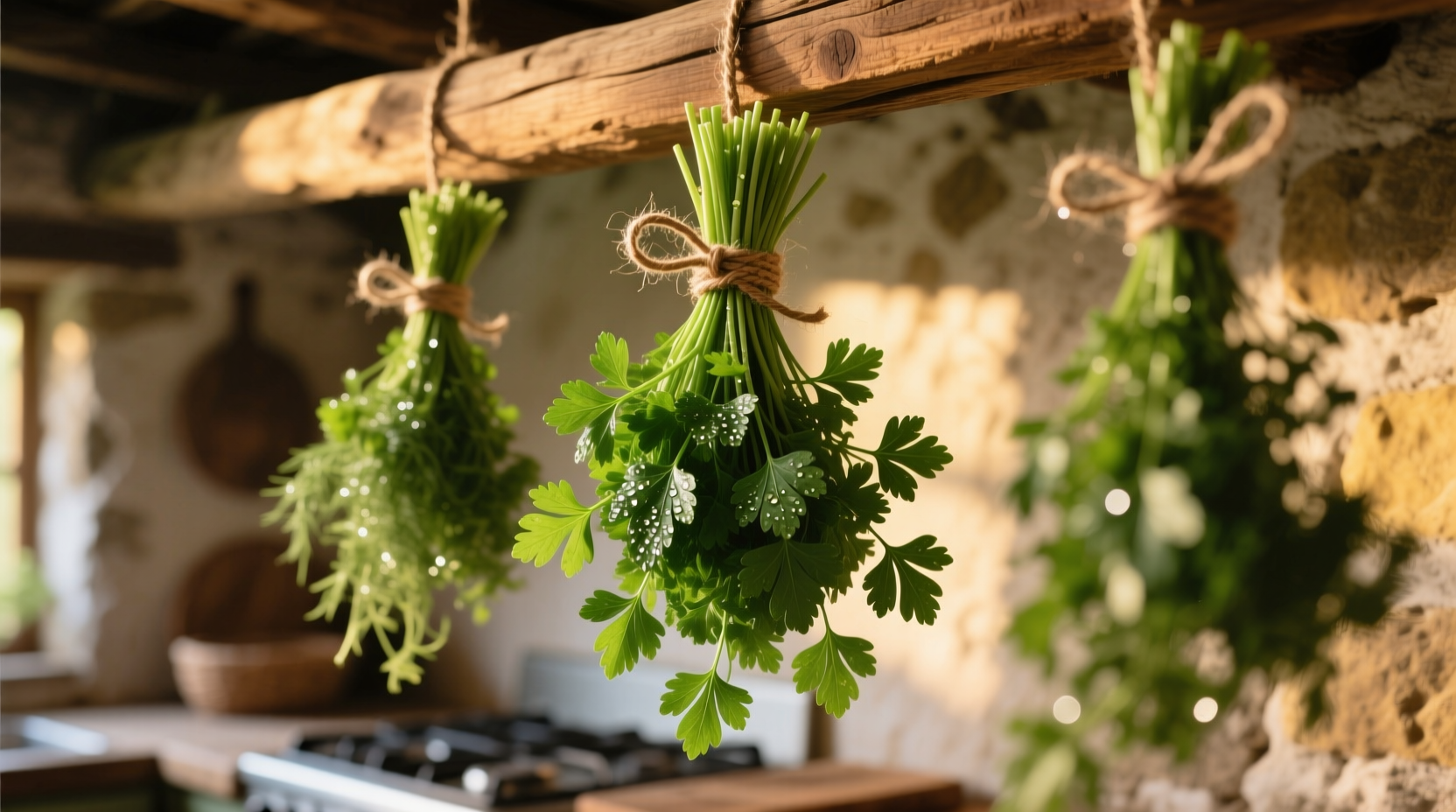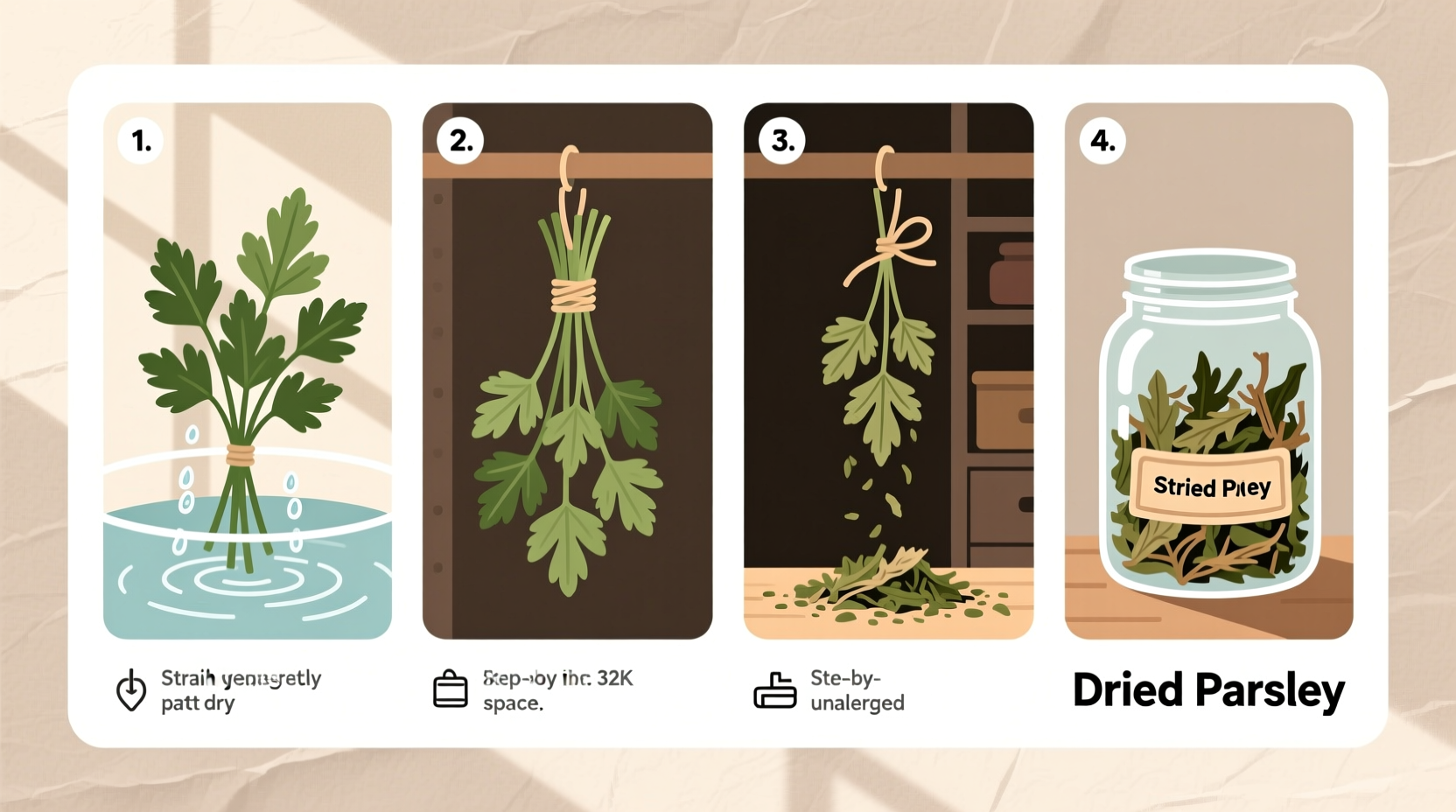Drying parsley properly preserves up to 90% of its essential oils and flavor compounds when using optimal methods. The three most effective techniques—air drying, oven drying, and dehydrator drying—require 1-7 days depending on humidity and method. Properly dried parsley maintains peak flavor for 6-12 months when stored in airtight containers away from light and moisture.
Preserving fresh parsley extends your herb harvest while maintaining culinary value. Whether you've harvested from your garden or bought in bulk, proper drying techniques transform perishable sprigs into shelf-stable seasoning. This guide delivers professional methods tested by culinary experts to maximize flavor retention and shelf life.
Why Proper Parsley Drying Matters
Improper drying causes significant flavor loss and potential spoilage. According to USDA agricultural research, herbs dried above 100°F (38°C) lose volatile compounds responsible for characteristic flavors. University of California Cooperative Extension studies show air-dried parsley retains 85-90% of its essential oils compared to 60-70% with conventional oven methods.
| Drying Method | Time Required | Flavor Retention | Best For |
|---|---|---|---|
| Air Drying | 5-7 days | 85-90% | Large harvests, no equipment needed |
| Oven Drying | 2-4 hours | 60-70% | Urgent preservation needs |
| Dehydrator | 3-4 hours | 80-85% | Consistent results, multiple batches |
Preparing Parsley for Drying
Start with fresh, blemish-free parsley harvested in the morning after dew evaporates. Research from Cornell University's Food Science Department confirms morning harvests contain peak essential oil concentrations. Gently wash sprigs in cool water and shake thoroughly to remove excess moisture—never skip this critical step as residual water promotes mold during drying.
For optimal results, sort parsley by stem thickness. Thick stems require longer drying times than leafy portions. Professional chefs recommend removing thick lower stems entirely as they dry unevenly. Pat leaves dry with clean linen towels—paper towels may leave fibers that affect flavor.

Air Drying Method: Traditional Technique
This zero-energy method works best in environments with 40-60% humidity and good airflow. Bundle 5-6 sprigs together with twine, securing stems firmly but not tightly. Hang bundles upside down in a dark, well-ventilated space away from direct sunlight.
Monitor drying progress using this timeline:
- Days 1-2: Leaves feel cool to touch, stems remain flexible
- Days 3-4: Leaves become brittle at edges, stems slightly flexible
- Days 5-7: Complete brittleness throughout, stems snap when bent
Avoid common mistakes: hanging near kitchen heat sources (accelerates drying too quickly), using synthetic twine (may transfer chemicals), or overcrowding bundles (traps moisture). The National Center for Home Food Preservation notes air-dried herbs maintain superior flavor complexity compared to faster methods.
Oven Drying Method: Quick Preservation
When time is limited, oven drying provides acceptable results with careful temperature control. Preheat oven to its lowest setting (ideally 150-170°F or 65-75°C). Spread single layers of parsley on parchment-lined baking sheets, ensuring no overlapping.
Prop oven door open 2-3 inches using a wooden spoon to maintain proper airflow. Check every 30 minutes, rotating trays for even drying. Total drying time typically ranges 2-4 hours depending on oven accuracy and parsley moisture content.
Critical limitation: This method works best for small batches only. University extension studies show oven drying reduces volatile oil content by 30-40% compared to air drying. Never exceed 180°F (82°C) as higher temperatures destroy delicate flavor compounds.
Dehydrator Method: Professional Results
Food dehydrators provide the most consistent results with minimal flavor loss. Set temperature to 95°F (35°C) and arrange parsley in single layers on trays. For leafy portions, remove from stems first to ensure even drying.
Processing time averages 3-4 hours. Check periodically after 2 hours—properly dried parsley should crumble easily between fingers. The American Society for Horticultural Science confirms dehydrators maintain optimal temperature and airflow for maximum flavor retention while preventing case hardening (when exterior dries too quickly, trapping interior moisture).
Storage Solutions That Maintain Flavor
Improper storage ruins even perfectly dried parsley. Transfer completely cooled herbs to airtight glass containers with oxygen absorbers. University food safety guidelines recommend dark-colored containers to protect against light degradation.
Store in a cool, dark cupboard—never above the stove or near heat sources. Properly stored dried parsley maintains peak flavor for 6-12 months. After one year, flavor gradually diminishes though remains safe for consumption. Check periodically for moisture condensation, which indicates container failure.
Using Dried Parsley Effectively
Understand dried-to-fresh conversion ratios: 1 teaspoon dried parsley equals 1 tablespoon fresh. Rehydrate in warm liquid for 10-15 minutes before use in sauces or dressings. For dry rubs or spice blends, use directly without rehydration.
Chef-tested tip: Add dried parsley early in cooking processes for soups and stews to allow full flavor release. For finishing dishes, sprinkle finely crushed dried parsley just before serving to preserve volatile compounds. Never use dried parsley in raw applications where fresh would normally be used—it lacks the bright flavor profile required.
Troubleshooting Common Issues
Mold development: Indicates insufficient drying. Discard affected portions immediately. Prevent by ensuring 0% moisture content before storage.
Color fading: Caused by light exposure. Transfer to opaque containers and store in complete darkness.
Musty odor: Signals moisture absorption. Spread on baking sheet and return to dehydrator at 95°F (35°C) for 30-60 minutes before retesting.
Flavor loss: Typically results from improper storage temperatures. Maintain storage below 70°F (21°C) for optimal preservation.











 浙公网安备
33010002000092号
浙公网安备
33010002000092号 浙B2-20120091-4
浙B2-20120091-4